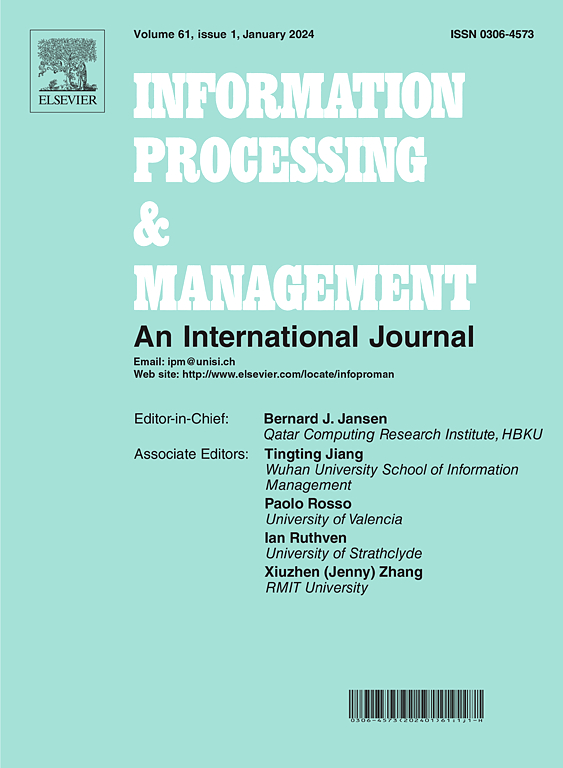Linguistic patterns in social media content from crisis and non-crisis zones: A case study of Hurricane Ian
IF 7.4
1区 管理学
Q1 COMPUTER SCIENCE, INFORMATION SYSTEMS
引用次数: 0
Abstract
Social media platforms, particularly Twitter, play a vital role in crisis response by delivering real-time information about affected populations. To enhance the accurate detection of crisis-relevant content, this study investigates linguistic distinctions between crisis and non-crisis zones. By analyzing over 263,000 tweets from within and outside the 2022 Hurricane Ian’s impact zone, we examine normalized word frequency, syntactic categories (nouns, verbs, adjectives, adverbs), sentiment, and user interaction patterns in the tweet networks. Our findings reveal a consistent power-law distribution in the relative differences of word use between crisis and non-crisis zones. Syntactic categories differences, particularly in adjectives, highlight the crisis zone’s emphasis on the hurricane’s path and impact, while the non-crisis zone’s vocabulary centers on current news topics such as sports, politics, and leisure. Syntactic analyses show that 36% (N = 20,967) of words are used in both crisis and non-crisis zones, 29% (N = 17,168) are unique to the crisis zone, and another 35% (N = 20,101) are unique to the non-crisis zone, highlighting the broader range of topics discussed in the non-crisis zone compared to the crisis zone. Sentiment analysis indicates comparable distributions of neutral words ( 99%), followed by negative words ( 0.4%) and positive words ( 0.4%). However, the use of profanity, indicating strong negative sentiment, occurred 19% more frequently in non-crisis zone tweets than in crisis zone tweets. Network analysis and network modeling show that the crisis zone network is denser and more cohesive, reflecting tight-knit communities during crises, whereas the non-crisis zone network is larger and more fragmented, indicating diverse user engagements. Our study’s contributions include providing insights into the distinctive usage of words in crisis and non-crisis zones, hence facilitating the evaluation of crisis-relevant language patterns. Ultimately, the findings may be used to aid responders in prioritizing urgent tweets originating from a crisis zone.
求助全文
约1分钟内获得全文
求助全文
来源期刊

Information Processing & Management
工程技术-计算机:信息系统
CiteScore
17.00
自引率
11.60%
发文量
276
审稿时长
39 days
期刊介绍:
Information Processing and Management is dedicated to publishing cutting-edge original research at the convergence of computing and information science. Our scope encompasses theory, methods, and applications across various domains, including advertising, business, health, information science, information technology marketing, and social computing.
We aim to cater to the interests of both primary researchers and practitioners by offering an effective platform for the timely dissemination of advanced and topical issues in this interdisciplinary field. The journal places particular emphasis on original research articles, research survey articles, research method articles, and articles addressing critical applications of research. Join us in advancing knowledge and innovation at the intersection of computing and information science.
 求助内容:
求助内容: 应助结果提醒方式:
应助结果提醒方式:


